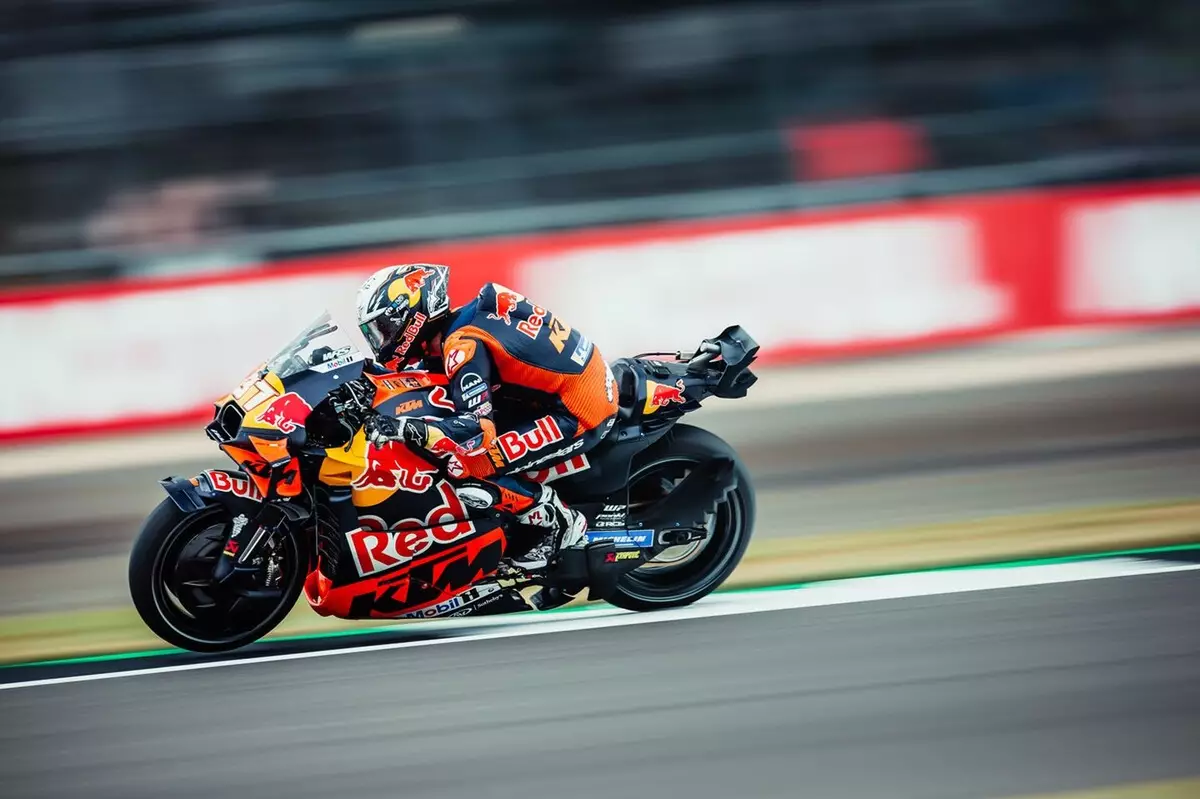KTM’s performance in the 2025 MotoGP season has been a mixed bag, oscillating between flashes of brilliance and frustrating mediocrity. Despite their determination to break through, the Austrian motorcycle manufacturer finds itself at a crossroads, facing significant challenges as uncertainty looms regarding its long-term participation in the series. With the riders voicing their frustrations and the competitive field becoming increasingly unforgiving, KTM has a lot to contemplate as it navigates the changing tides of MotoGP racing.
Current Standings: A Reflection of Struggles
When analyzing the current standings, the dissatisfaction emanating from KTM’s factory squad becomes starkly evident. Emerging talent Pedro Acosta claims the highest position among KTM riders, sitting in ninth, while veteran Brad Binder is further down the ranks at 14th. Acosta’s previous successes, including back-to-back podium finishes at Aragon on Tech3’s KTM last year, appear overshadowed by the team’s lackluster performance this season. Acosta himself remains grounded, keen to temper expectations by reiterating a conservative approach to the upcoming races. His comments highlight a pragmatic mindset amidst challenging circumstances, accepting that competing for podiums requires not just skill but also dependability from their machinery.
Acknowledging Performance Shortcomings
Acosta’s candid admission that KTM’s qualifying pace has been a disaster points to deeper-rooted issues within the team’s setup. The competition in MotoGP does not only hinge on raw speed but also on strategic positioning during qualifying rounds. Being in the lower tier of the grid severely hampers a rider’s ability to contest top spots during races. Acosta’s analysis reflects a critical self-awareness that any team, especially one eager to climb to the upper echelons of a fiercely competitive sport, needs.
This glaring disparity poses a pressing question: Is the team equipped to make the necessary adjustments to reclaim their competitive edge in a landscape that continuously rewards innovation and performance? KTM’s riders appear to be keenly aware of these challenges, as Acosta’s frustration with their qualifying times underscores a sense of urgency for improvement.
Hope Amidst a Testing Landscape
Despite the ongoing struggles, there are glimmers of optimism. Brad Binder’s visit to KTM’s headquarters in Mattighofen suggests a commitment to future development and sustained collaboration between the riders and engineering teams. This trip allowed them to gain insights into the development pipeline and underscore KTM’s commitment to enhancing their technological capabilities. Binder’s remarks reflect a blend of pragmatism and hope, acknowledging the work ahead while remaining motivated by the possibilities on the horizon. The initiatives aimed at improving cornering abilities and rolling speed through turns indicate that KTM recognizes its weaknesses—an important first step toward mitigating them.
However, even amid this optimism, the underlying tension cannot be overlooked. KTM’s current strategy raises eyebrows: Is it wise to “hold out” until the 2027 regulations come into play? This long-term anticipation brings a level of risk that could jeopardize their standings and relevance in the sport. As the team contemplates its future, it must balance immediate needs against the lure of potential regulatory changes that could reshape MotoGP.
Looking Forward: A Fork in the Road
The road ahead for KTM is fraught with uncertainty. Riders are rapidly feeling the pressure of the competitive environment. While their willingness to adapt and evolve showcases a commendable team spirit, the performance indicators signal a need for immediate and aggressive action. Failure to capitalize on potential advancements or misjudging the preparation for future regulations could leave the team stranded as a mere footnote in the annals of MotoGP history.
In this ever-evolving landscape, both Acosta and Binder serve as the faces of KTM’s ambitions but must also navigate their individual careers within the organization’s broader strategic framework. Will they find the breakthrough needed to elevate their performances, or will KTM continue to struggle amid the pressures of modernization and competition? Only time will reveal the outcome, but for now, KTM stands at a pivotal juncture where clarity and decisiveness are urgently required.


Leave a Reply